Family: Araceae
Scientific name: Amorphophallus titanum
Common name: Titan arum, corpse flower
Native of: Rainforests of western Sumatra
Greenhouse location: Room P
Amorphophallus titanum
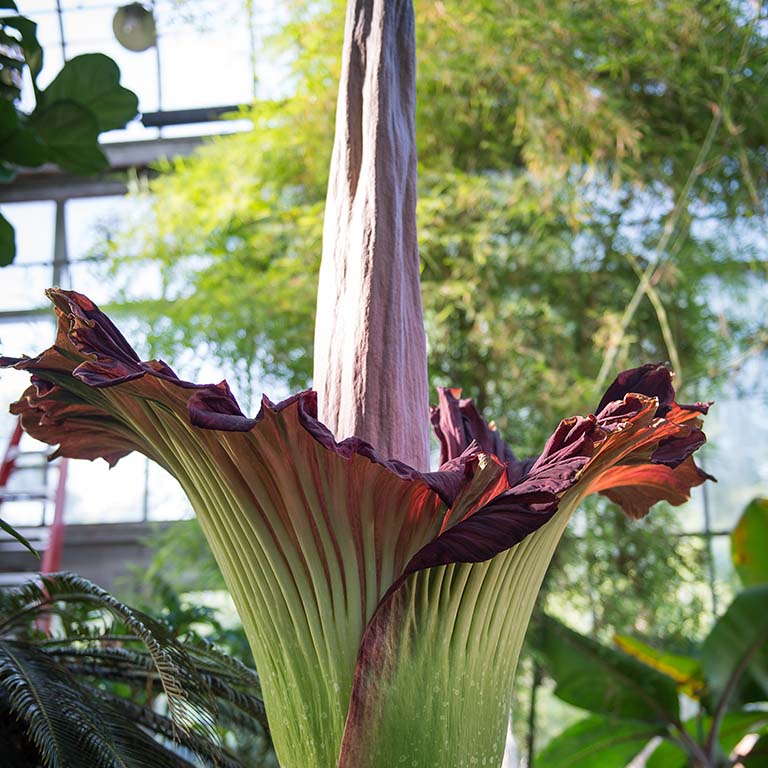
The Amorphophallus titanum has one of the largest unbranched inflorescences (cluster of flowers arranged on a single stalk or a branched stalk) in the world, reaching over 10 feet tall.
This perennial plant grows from a corm (swollen underground plant stem that serves as a food-storage structure to help plants reproduce and/or survive adverse conditions), producing a single compound leaf that looks like a small tree. The leaf can reach a height of 20 feet and a diameter of 16 feet.
A. titanum usually goes through several leaf cycles before it has stored up enough energy to bloom. It takes from 8 to 20 years for the plant to produce its first bloom. It then flowers between one or more leaf cycles approximately every 3 years if conditions are right. The bloom lasts only 24 to 36 hours.
The inflorescence of the A. titanum consists of a spike (spadix) enclosed within a sheath (spathe). Tiny male and female flowers encircle the base of the spadix.
A. titanum is known as the "corpse flower" because while in bloom, it produces the odor of rotting flesh, luring flies and carrion-eating beetles for pollination. The stunning scarlet interior and furrowed texture of its spathe are thought to aid in the carcass illusion. During the peak of blooming, the tip of the hollow spadix heats up to a maximum temperature of 100 degrees F. to help volatilize the plant's stinky perfume. According to Wikipedia, "Analyses of chemicals released by the spadix show the stench includes dimethyl trisulfide (like limburger cheese), dimethyl disulfide, trimethylamine (rotting fish), isovaleric acid (sweaty socks), benzyl alcohol (sweet floral scent), phenol (like Chloraseptic), and indole (like feces)."
If you're lucky enough to experience A. titanum's bloom in person, you'll find that its stench and appearance make it breathtaking both literally and figuratively.
The late Greg Speichert, former director of the Hilltop Garden and Nature Center at IU, donated the A. titanum to IU in December 2007. Our A. titanum is nicknamed "Wally" in honor of Hugh Wallace "Wally" Scales, the first manager of the Jordan Hall (now Biology Building) greenhouse.
Wally's first bloom, 2016
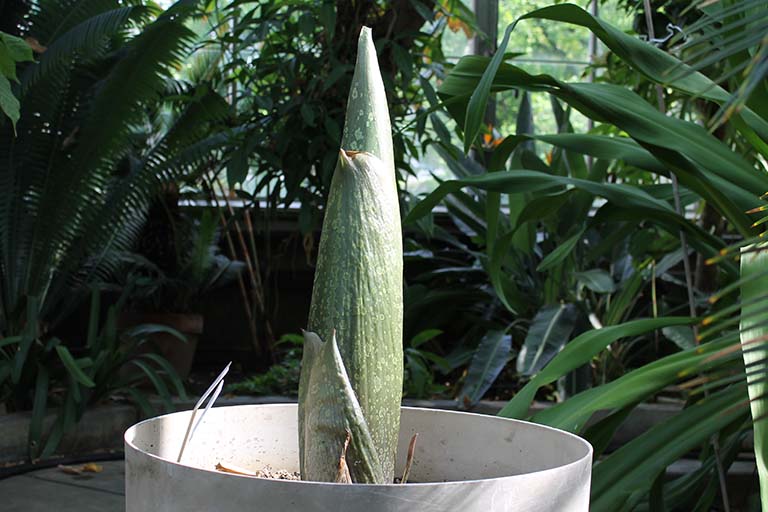

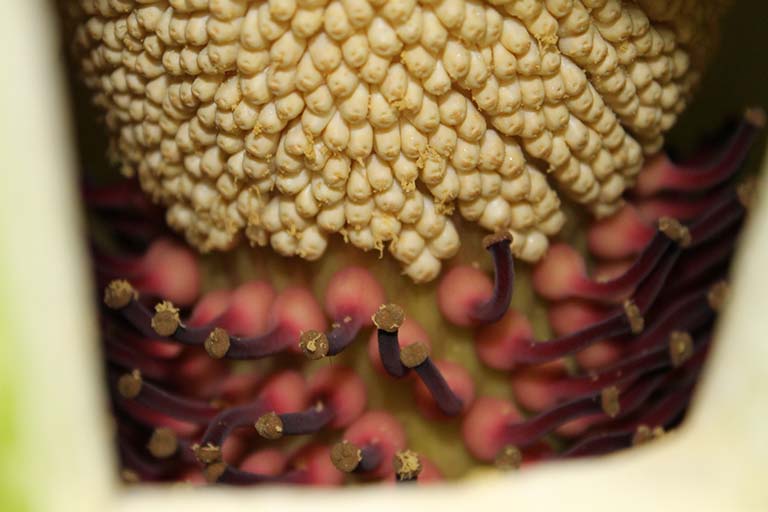
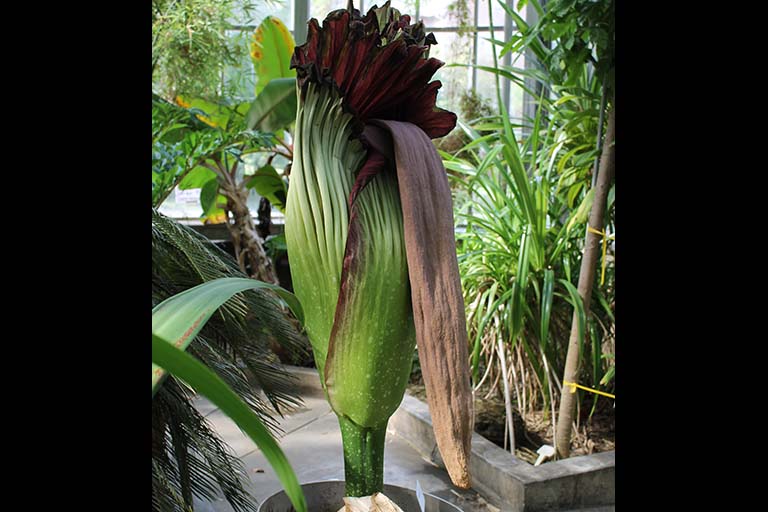

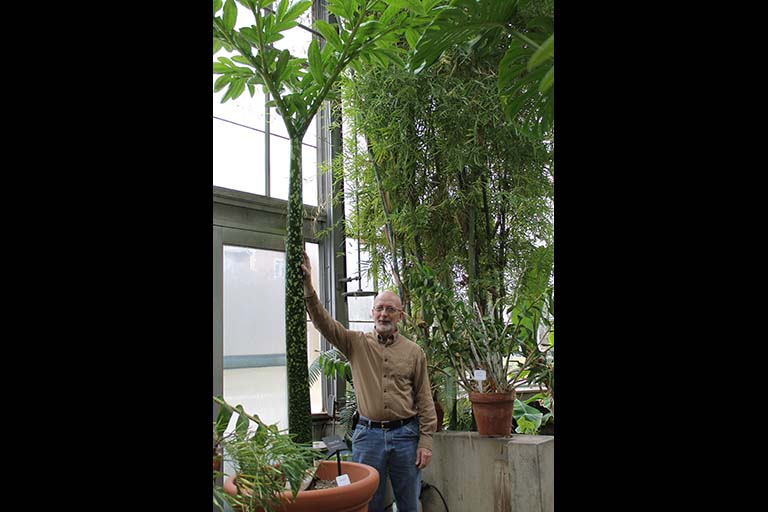
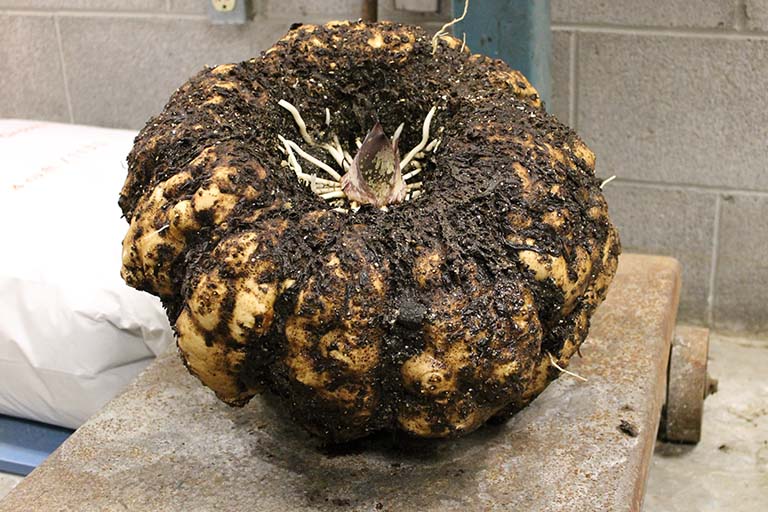

Time-lapse video of Wally's 2016 bloom
Description of the video:
[Soft, gentle music playing.]
Wally's second bloom, 2020
Our Amorphophallus titanum, affectionately known as Wally (in honor of Hugh Wallace "Wally" Scales, the first manager of the Biology Building greenhouse), bloomed for the first time in 2016. After two leaf cycles, Wally sent up new growth in fall 2020 that became the plant's second bloom, fully opening on December 17, 2020. Unfortunately, COVID-19 pandemic restrictions prevented visitors and all of the fanfare that revolved around Wally's first bloom. Below are a few photos from Wally's second bloom.
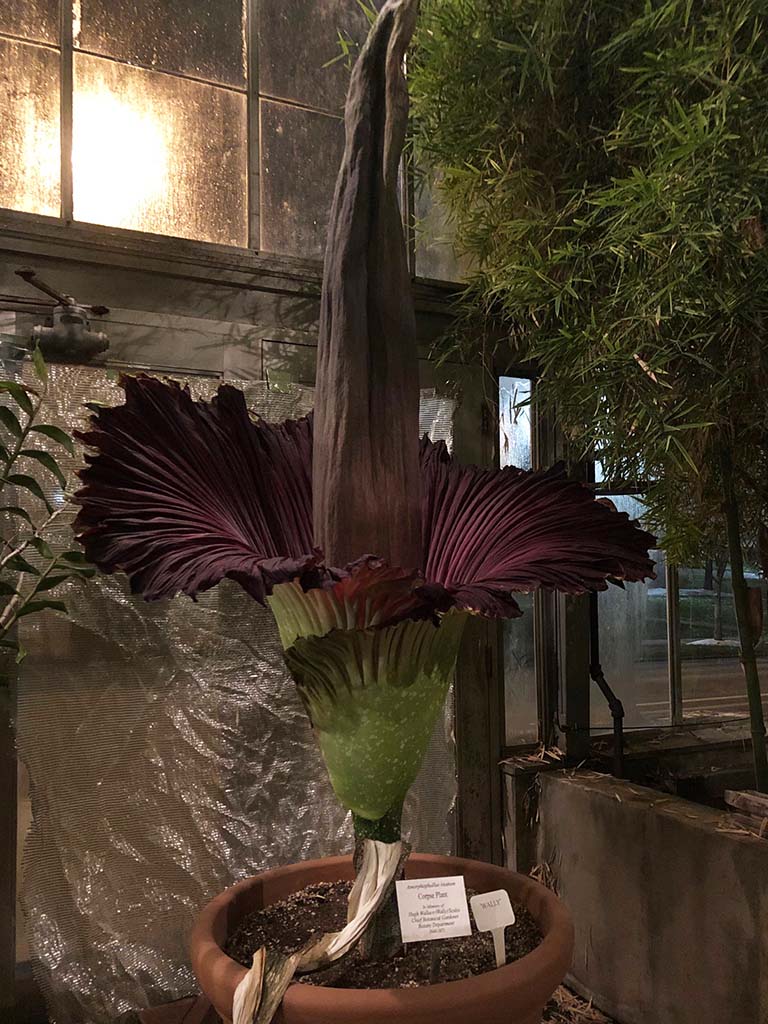
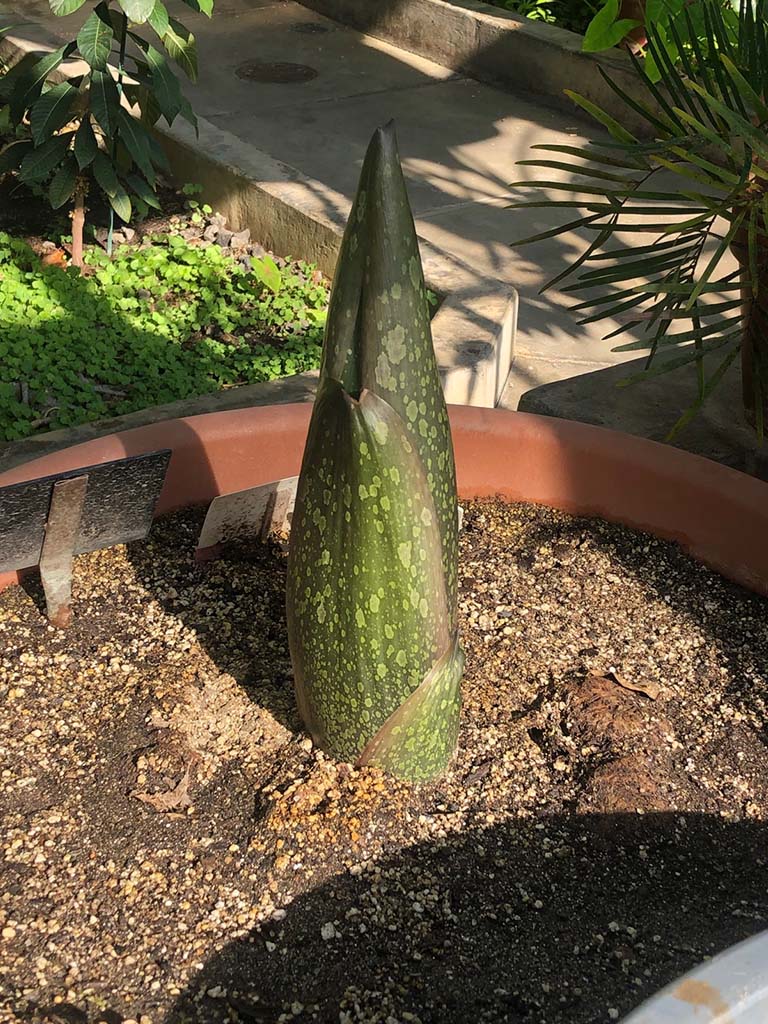

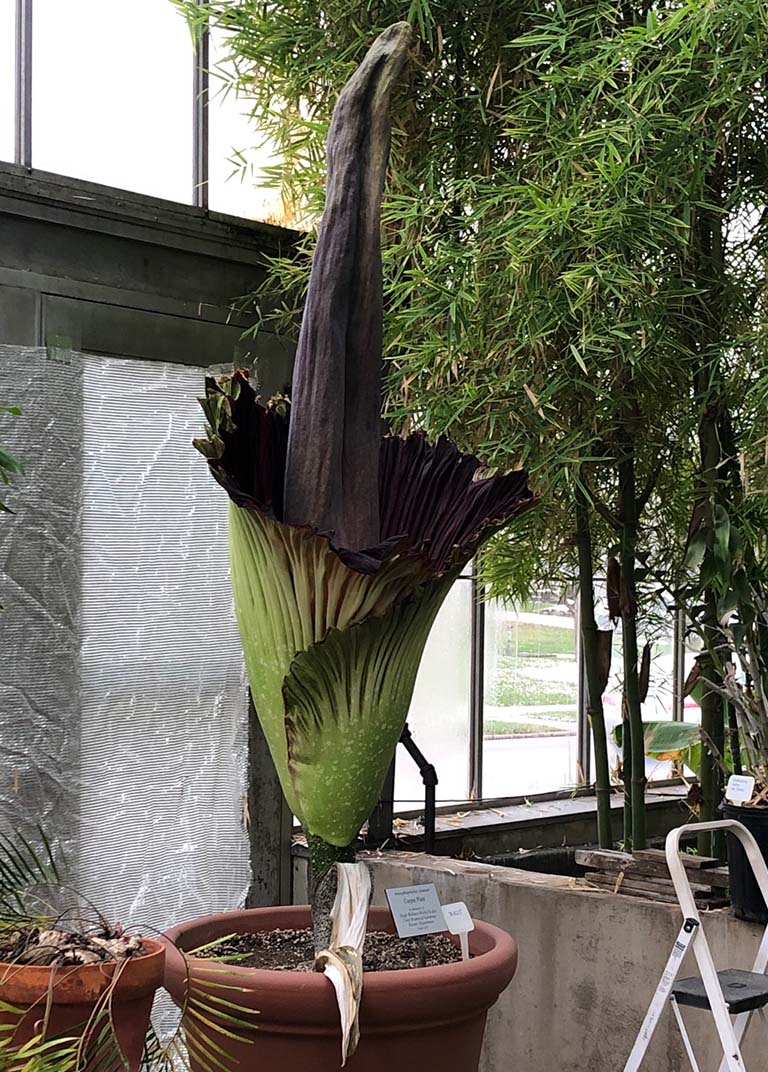

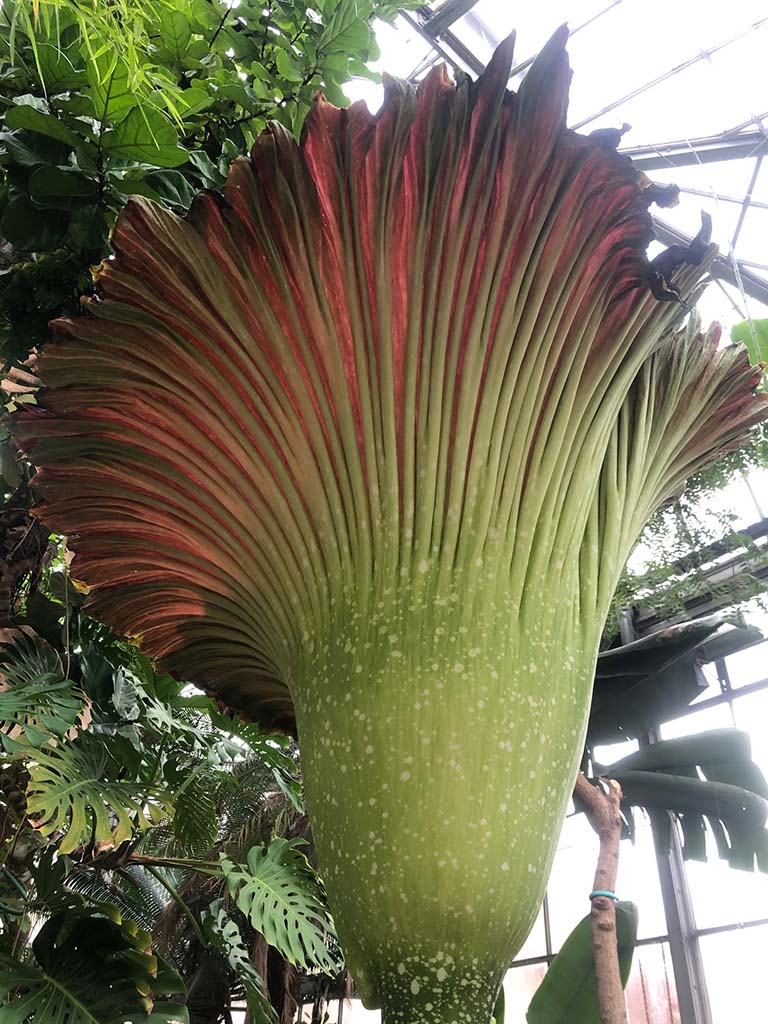
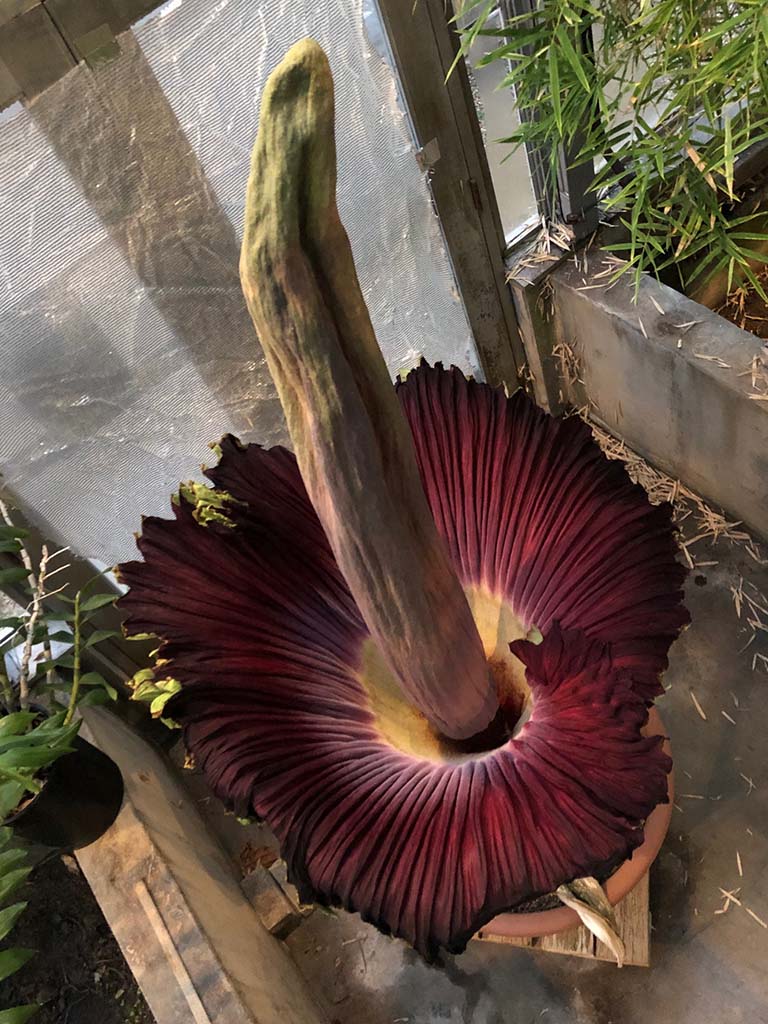

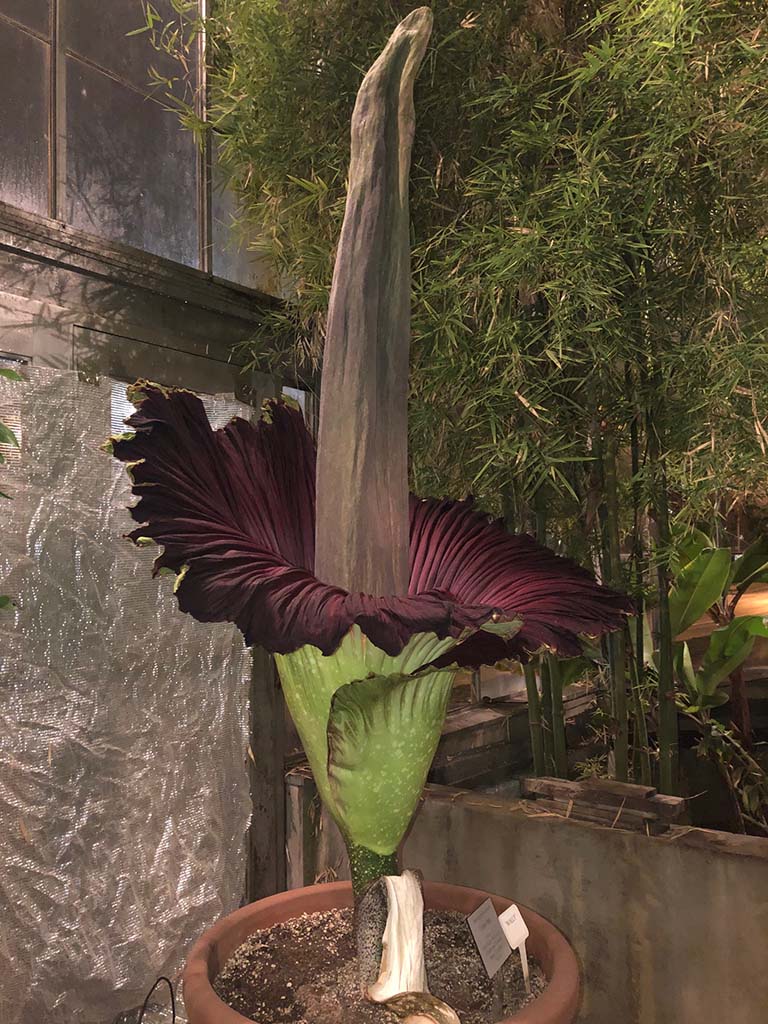
Wally's third bloom, 2023
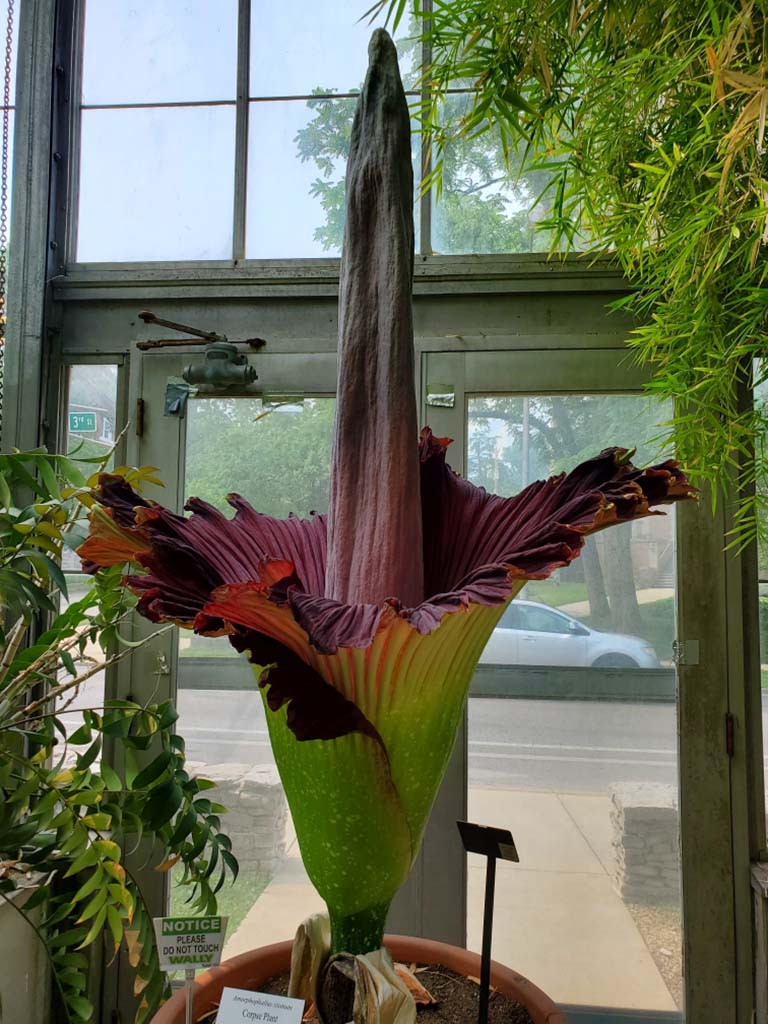
Wally produced a new sprout in early May 2023. The plant had been through one leaf cycle since the last bloom in 2020.
On June 12, Wally's sprout had reached 3 feet in height, and greenhouse acting director John Leichter determined it was a bloom.
By the morning of June 27, the infloresence had topped out at a height of 6 feet 4 inches, surpassing the height of the plant's 2016 bloom (which was 6 feet 3 inches). The inflorescence of a corpse plant can potentially reach 10 feet tall. The bloom began to unfurl later in the day, prompting the greenhouse to extend its visiting hours into the evening so people could view (and smell) Wally's stunning bloom.
Wally's fourth bloom, 2025
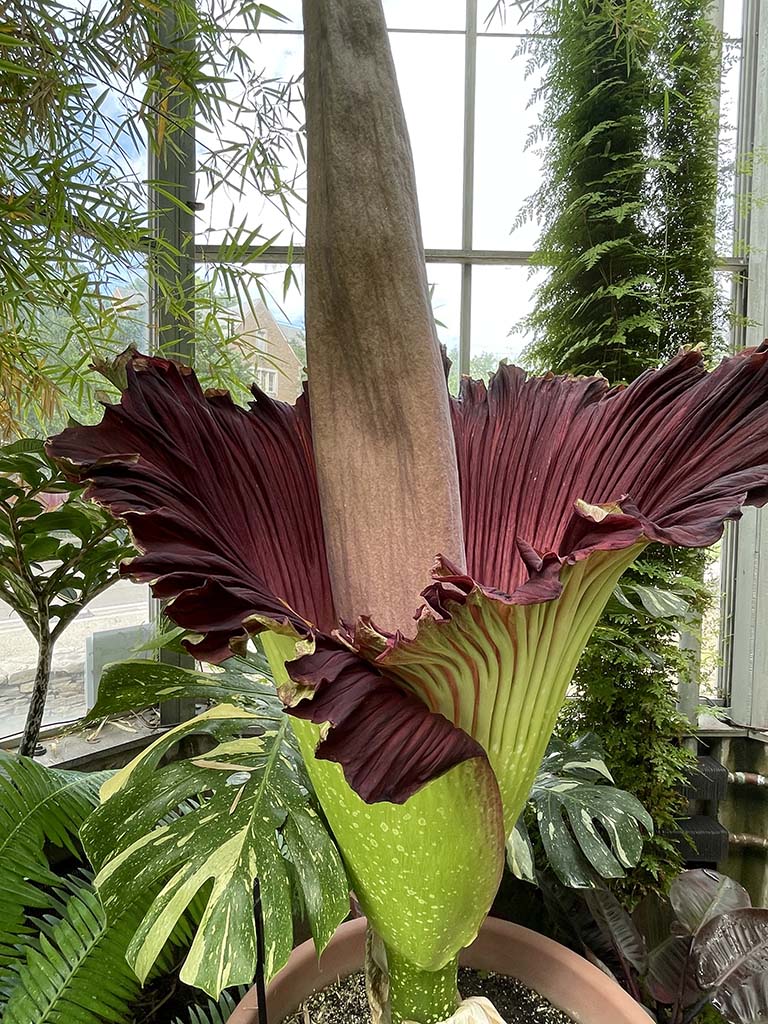
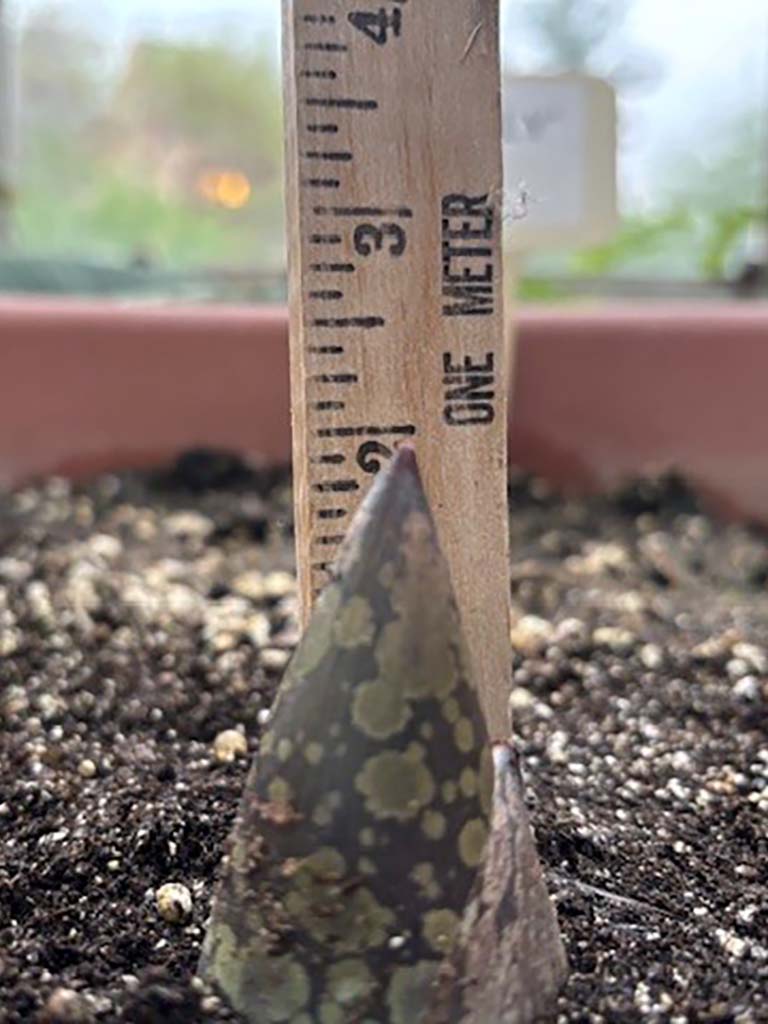
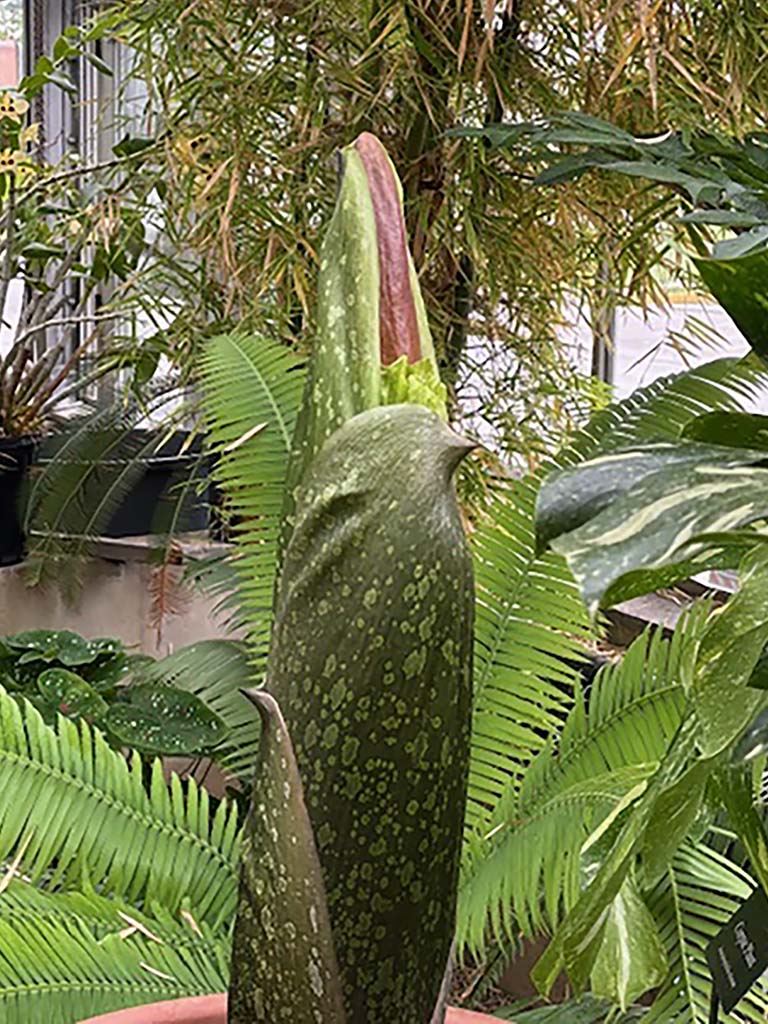
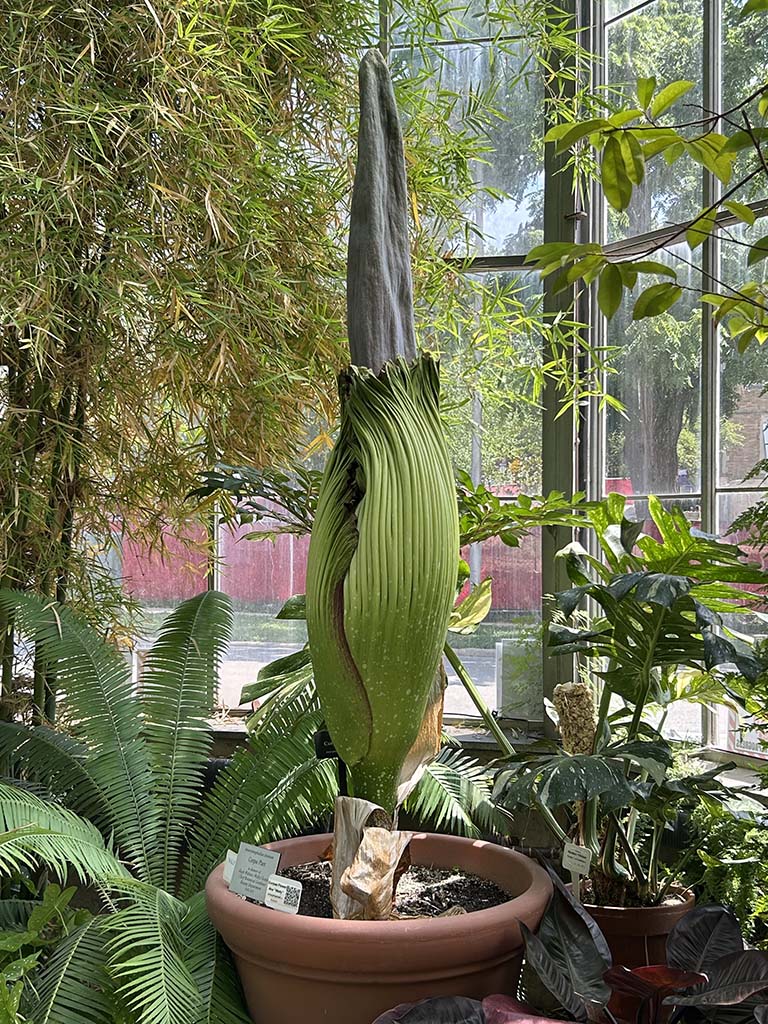
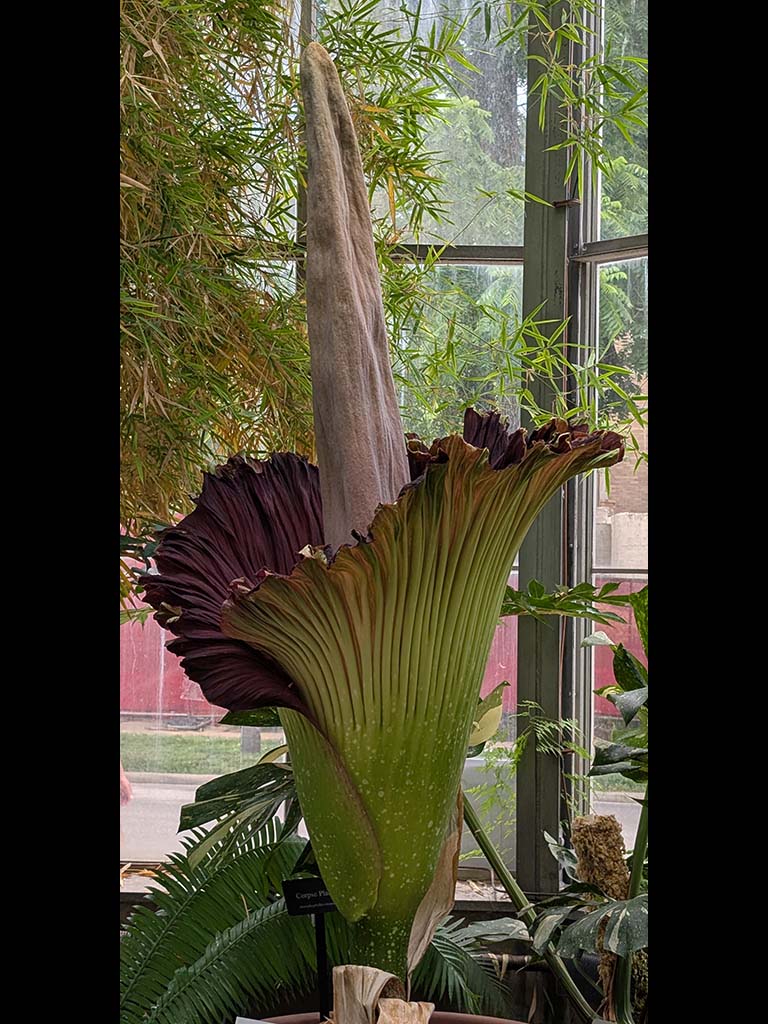
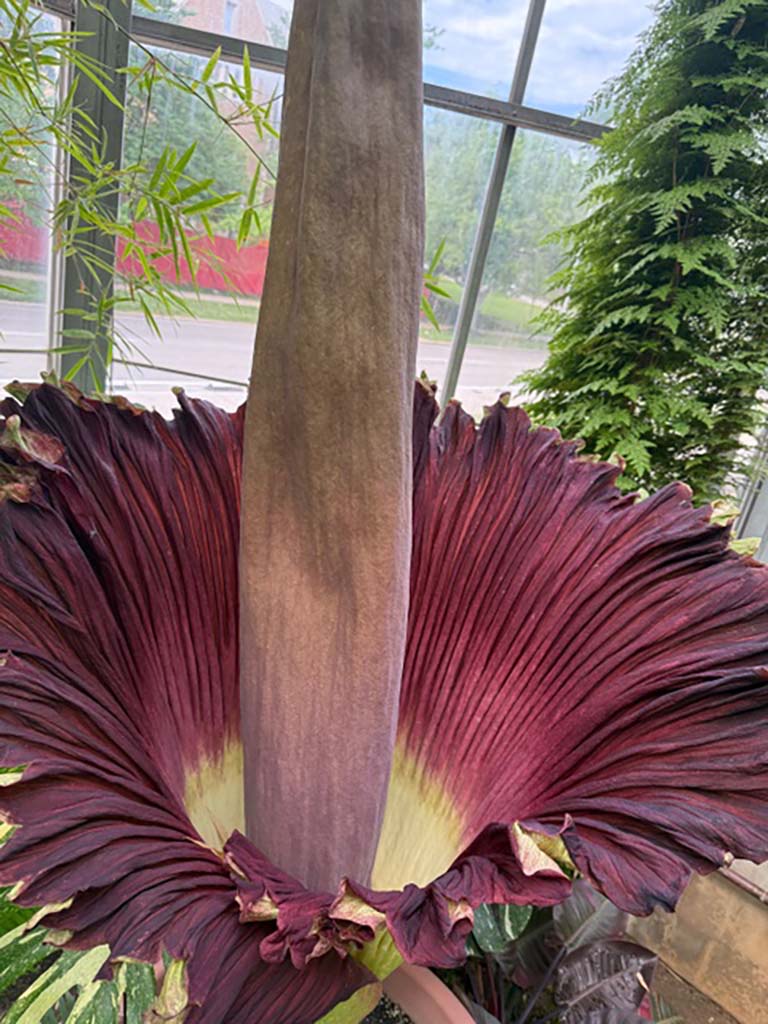
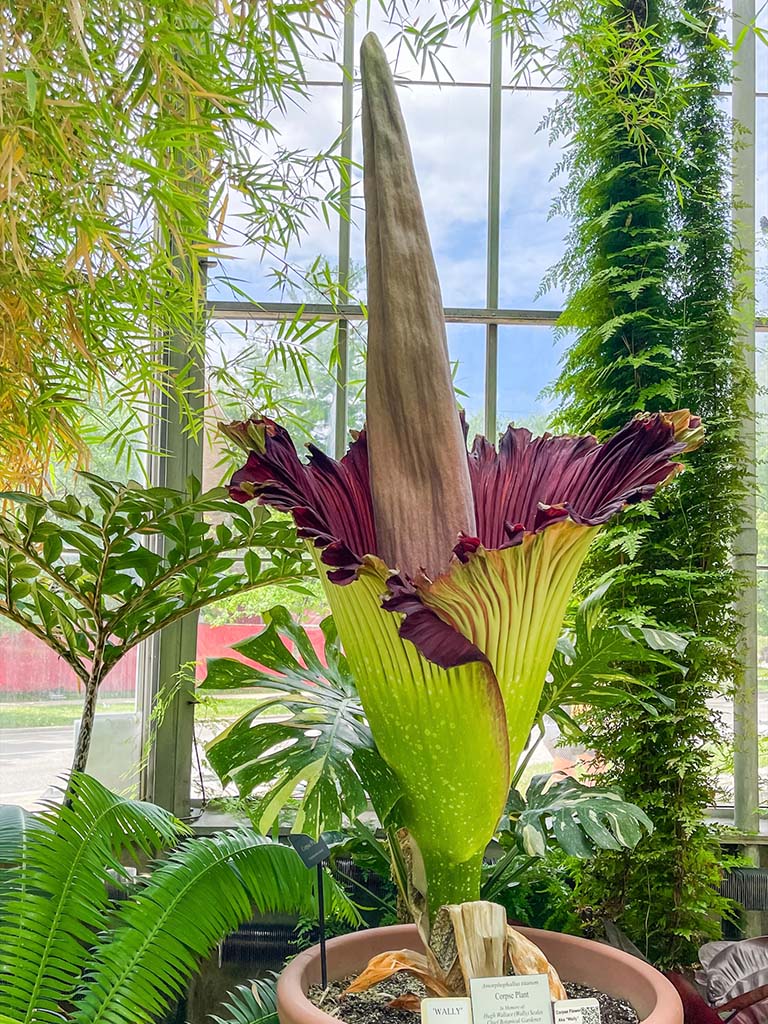
When greenhouse supervisor John Leichter dug up and repotted Wally's corm in January 2025, it weighed 52.5 pounds. The plant had been through one leaf cycle since the last bloom in 2023. The leaf had sustained minor damage during a repair in the greenhouse.
On April 22, Leichter announced that a sprout had appeared. Wally's spathe-wrapped spadix pushed upward beyond the green sheaths on June 16 to confirm that the sprout was a bloom rather than a leaf.
The last measurement taken on Friday, June 27, found that the infloresence had reached a height of 6 feet 7 inches—Wally's tallest bloom yet! The inflorescence of a corpse plant can potentially reach 10 feet tall. The bloom began to unfurl later in the day—exactly two years from the date when Wally's third bloom began to unfurl!—prompting the greenhouse to extend visiting hours into Friday evening and Saturday. Staff estimated 4700 visitors viewed Wally on June 27 and 28.

